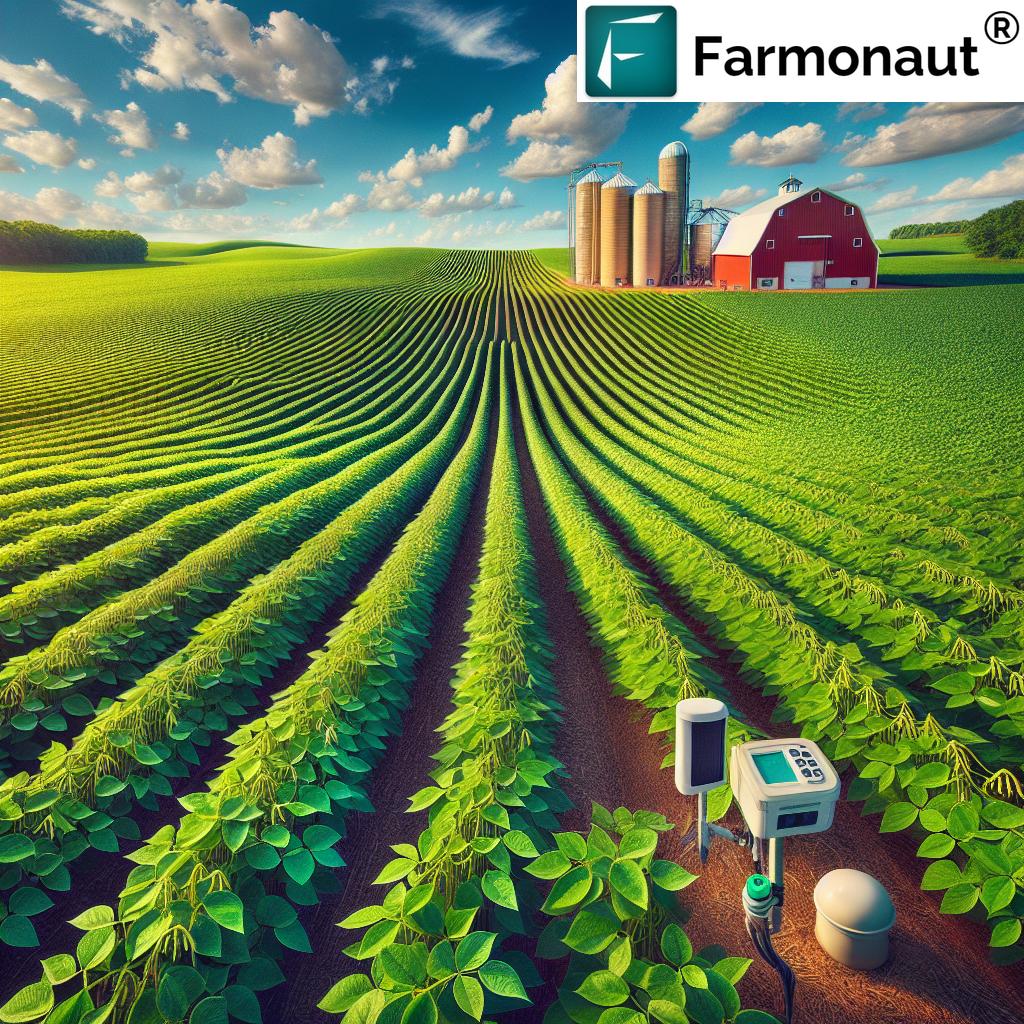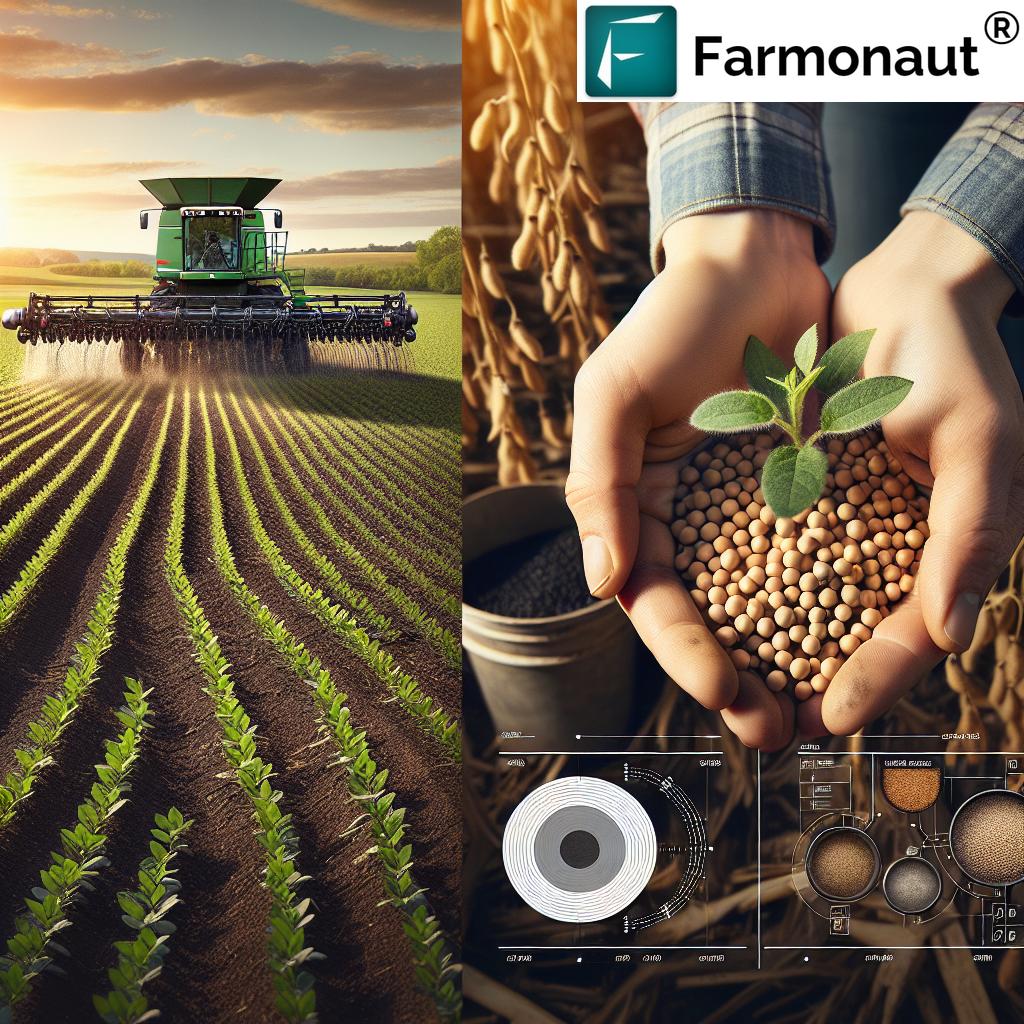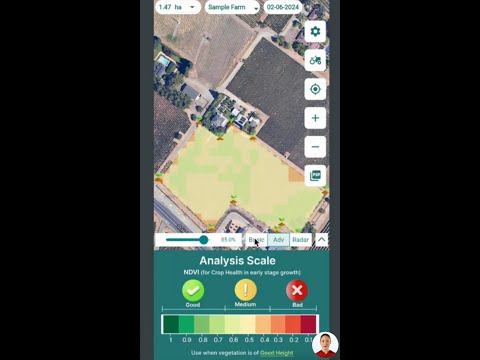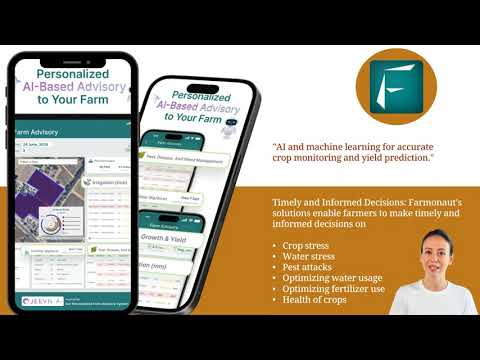Wisconsin Soybean Yield Contest: Innovative Practices Boost Sustainability and Production
“The 2024 Wisconsin Soybean Yield Contest saw a record number of entries, showcasing farmers’ commitment to improved production and sustainability.”
Welcome to our comprehensive analysis of the 2024 Wisconsin Soybean Yield Contest, where innovative farming techniques and sustainable practices took center stage. This year’s contest not only showcased impressive yields but also highlighted the agricultural community’s dedication to improving both production and sustainability. As we delve into the results and strategies employed by the winners, we’ll explore how these practices can be applied to boost soybean yields across the board.
Record-Breaking Participation and Yields
The 2024 contest garnered over 100 participants, marking a 15% increase from the previous year and the highest number of entries in its 15-year history. This surge in participation underscores the growing interest among producers in refining their production methods and embracing sustainable farming practices.
Shawn Conley, the University of Wisconsin-Madison small grains specialist overseeing the contest, noted, “It’s great to see farmers working to increase the sustainability of their operations through both efficiencies, input management, and really working to improve their farming. They’re not just out there plowing up and down the side of the hill, planting stuff just for profit. Producers are trying to do a good job and being excellent stewards of the land.”

Division Winners and Their Strategies
Let’s take a closer look at the winners across different divisions and the innovative practices that led to their success:
Division 3 Winner: Don and Doug Midthun
The Midthun brothers from Arlington clinched the top spot in Division 3 with an impressive yield of 98.54 bushels per acre, which was also the highest overall yield in the contest. Their success can be attributed to several key factors:
- Early planting: The Midthuns planted their soybeans on April 21, taking advantage of the early growing season.
- Precision fertility management: They utilized variable-rate mapping and three-year soil test results to tailor their fertility program.
- Optimal planting population: A seeding rate of 125,000 seeds per acre in 30-inch rows proved to be the sweet spot for their operation.
- Comprehensive weed control: A combination of pre-emergence and post-emergence herbicide treatments effectively managed waterhemp, their primary weed challenge.
The Midthuns’ approach demonstrates the importance of precision agriculture and timely management practices in achieving top-tier soybean yields.
Division 4 Winner: Dan Kamps
Dan Kamps of Darlington secured first place in Division 4 with a yield of 96.76 bushels per acre. His success story is particularly noteworthy as this was only his second year growing soybeans. Kamps’ winning strategies included:
- Strip-tillage: Implementing strip-tillage across his farm contributed to better soil health and moisture retention.
- Early planting: Like the Midthuns, Kamps planted early (April 27) to maximize the growing season.
- Foliar feeding and fungicide application: A well-timed combination of foliar nutrients and fungicides supported plant health throughout the season.
Kamps’ success highlights the potential for newer soybean growers to achieve impressive yields through careful management and adoption of proven practices.
Division 2 Winner: John Webb
John Webb of Baraboo topped Division 2 with a yield of 91.79 bushels per acre. As a relatively new farmer with only three years of experience, Webb’s success demonstrates the impact of adopting cutting-edge practices:
- Residue management: Webb used a McFarlane reel disk to manage excess residue, preparing an optimal seedbed.
- Narrow row spacing: Planting in 9-inch rows with a drill allowed for better canopy closure and weed suppression.
- Irrigation management: Strategic irrigation during dry periods in August helped ensure proper pod fill.
Webb’s approach underscores the importance of adapting to field conditions and utilizing available resources effectively.
Division 1 Winner: Emily Sleik
Emily Sleik of Berlin won Division 1 with a yield of 88.8 bushels per acre, narrowly edging out her husband by 0.57 bushels. The Sleiks’ winning strategies included:
- High planting population: A seeding rate of 150,000 seeds per acre maximized yield potential.
- Targeted fertility program: In-furrow fertilizer application and preplant potash incorporation provided essential nutrients throughout the growing season.
- Drone-assisted foliar feeding: Utilizing drone technology for foliar application allowed for precise nutrient delivery at critical growth stages.
The Sleiks’ approach demonstrates the value of combining traditional practices with modern technology to achieve optimal yields.

New Categories: First-Time Entrant and Planting Green
The 2024 contest introduced new categories to encourage broader participation and highlight sustainable practices:
First-Time Entrant Winner: Steve Steinhoff
Steve Steinhoff of Darlington achieved an impressive 86.77 bushels per acre in his first contest entry. His success was built on:
- Balanced fertility: A fall application of potash, DAP, and sulfur provided a strong nutritional foundation.
- Precise planting: Using a 16-row John Deere 1750 planter, Steinhoff achieved uniform seed placement and emergence.
- Effective weed control: A well-timed herbicide application managed problematic weeds like waterhemp and ragweed.
Planting Green Winner: Tom Novak
Tom Novak of Highland won the new “planting green” category with a yield of 85.22 bushels per acre. This category emphasizes the use of cover crops and no-till methods to improve soil health. Novak’s winning approach included:
- Multi-species cover crops: Following rye grain, Novak planted a diverse cover crop mix to enhance soil biology.
- No-till practices: Planting directly into living cover crops minimized soil disturbance and improved water infiltration.
- Integrated fertility management: Combining organic (manure) and inorganic fertilizers provided a balanced nutrient profile.
Novak’s success in this category highlights the potential for cover crops and no-till practices to contribute to both yield and sustainability goals.
Key Takeaways from the 2024 Wisconsin Soybean Yield Contest
“Winners in the contest demonstrated success with variable-rate mapping, targeted herbicide applications, and optimal planting populations for maximizing soybean yields.”
As we analyze the results of this year’s contest, several common themes emerge that can guide soybean producers in optimizing their yields and sustainability:
- Early planting: Across divisions, winners consistently planted their soybeans early in the season, taking advantage of the full growing period.
- Precision fertility management: Variable-rate applications and targeted nutrient programs were key to supporting high yields.
- Optimal planting populations: Finding the right seeding rate for specific field conditions proved crucial for maximizing yield potential.
- Integrated weed management: Combining pre-emergence and post-emergence herbicide applications effectively controlled problematic weeds.
- Cover crops and conservation practices: The success of the “planting green” category demonstrates the potential for cover crops and no-till methods to contribute to both yield and soil health.
These practices not only contributed to impressive yields but also aligned with sustainable farming principles, showcasing how productivity and environmental stewardship can go hand in hand.
Leveraging Technology for Soybean Yield Optimization
While the contest winners demonstrated the effectiveness of various management practices, it’s important to note how technology can further enhance soybean production. Precision agriculture tools, such as those offered by Farmonaut, can provide valuable insights for soybean growers:
- Satellite-based crop health monitoring: Real-time vegetation health indices can help farmers identify issues early and make timely interventions.
- AI-driven advisory systems: Personalized recommendations based on field-specific data can optimize management decisions.
- Weather forecasting: Accurate, localized weather predictions can inform planting, spraying, and harvesting decisions.
By integrating these technological tools with the proven practices demonstrated in the Wisconsin Soybean Yield Contest, farmers can work towards consistently achieving higher yields while maintaining sustainable operations.
Wisconsin Soybean Yield Contest Results Summary
| Division | Winner’s Name | Yield (bu/acre) | Key Practice Implemented | Sustainability Measure |
|---|---|---|---|---|
| Division 3 | Don and Doug Midthun | 98.54 | Variable-rate mapping | Targeted herbicide application |
| Division 4 | Dan Kamps | 96.76 | Strip-tillage | Foliar feeding optimization |
| Division 2 | John Webb | 91.79 | Narrow row spacing | Efficient irrigation management |
| Division 1 | Emily Sleik | 88.80 | High planting population | Drone-assisted foliar feeding |
| First-Time Entrant | Steve Steinhoff | 86.77 | Balanced fertility program | Precise planting techniques |
| Planting Green | Tom Novak | 85.22 | Multi-species cover crops | No-till practices |
Conclusion: Embracing Innovation for Sustainable Soybean Production
The 2024 Wisconsin Soybean Yield Contest has provided valuable insights into the practices that can lead to exceptional soybean yields while promoting sustainability. From early planting and precision fertility management to the integration of cover crops and no-till methods, the contest winners have demonstrated that innovation and careful management are key to success in soybean production.
As we look to the future of soybean farming, it’s clear that the integration of traditional agronomic knowledge with cutting-edge technology will play a crucial role in meeting the dual challenges of increasing productivity and enhancing sustainability. By adopting the strategies showcased in this contest and leveraging advanced tools like those offered by Farmonaut, soybean growers can work towards achieving consistently high yields while preserving the long-term health of their land.
We encourage all soybean producers to consider how they might implement some of these winning strategies in their own operations. Whether it’s fine-tuning planting populations, exploring cover crop options, or adopting precision agriculture tools, there are numerous ways to enhance both yield and sustainability in soybean production.
FAQs
- What was the highest yield achieved in the 2024 Wisconsin Soybean Yield Contest?
The highest yield was 98.54 bushels per acre, achieved by Don and Doug Midthun in Division 3. - How many entries did the 2024 contest receive?
The contest received over 100 entries, marking a 15% increase from the previous year. - What new category was introduced in the 2024 contest?
The “planting green” category was introduced, emphasizing the use of cover crops and no-till methods. - What was a common practice among top performers in the contest?
Early planting was a common practice among many of the top performers across divisions. - How can technology like Farmonaut help soybean growers?
Farmonaut offers satellite-based crop health monitoring, AI-driven advisory systems, and weather forecasting to help optimize soybean production and management decisions.
Earn With Farmonaut: Affiliate Program
Earn 20% recurring commission with Farmonaut’s affiliate program by sharing your promo code and helping farmers save 10%. Onboard 10 Elite farmers monthly to earn a minimum of $148,000 annually—start now and grow your income!
Ready to take your soybean yields to the next level? Explore Farmonaut’s precision agriculture solutions:
For developers interested in integrating Farmonaut’s powerful satellite and weather data into their own applications, check out our API and API Developer Docs.







